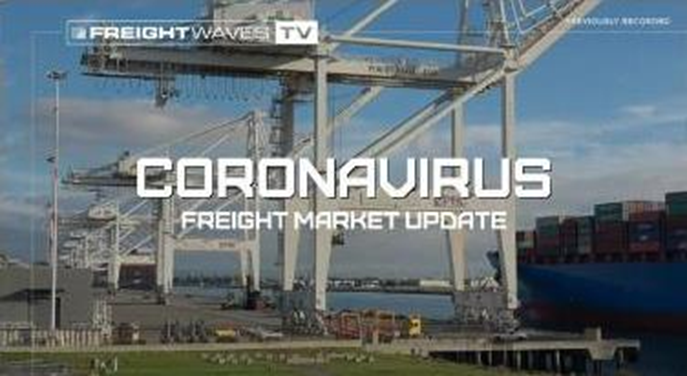Two full months have passed since COVID-19 completely turned our normal economy on its head.
We’ve had time to adjust our lives and business strategies — and now we have initial data of what happened in some of the strangest months in modern history.
Last week, we discussed how B2B websites were doing well during this time. Now, we look at which specific B2B industries shifted their online advertising the most between March and April.
We encourage you to subscribe to our blog for the latest data surrounding the advertising industry. We will provide daily updates as COVID-19 continues to make its mark on the US economy.

B2B Companies Going Different Directions
Some B2B companies are experiencing deep losses, while others are experiencing heightened demand.
Travel
Travel has been cut dramatically as business meetings and events are cancelled.
Roughly 80% of hotel rooms across the States are empty due to this crisis.
“The impact to our industry is already more severe than anything we’ve seen before, including September 11th and the great recession of 2008 combined,” according to American Hotel & Lodging Association President and CEO Chip Rogers. While some states are starting to reopen, it is unclear when people are going to start traveling again.
Experts believe that corporate travel will return to somewhat normal levels before leisure travel — but achieving ‘normal’ levels is likely to take two to five years according to airline research analyst Helane Becker. She noted, however, that it may never fully be the same.
People are getting in the habit of Zoom meetings and virtual webinars. Digital communication, while not perfect, is becoming the norm. People are social and will want to connect face-to-face eventually, but until there is a vaccine or treatment, virtual meetings are what we have.
Freight Services and Supply Chain Management
While travel and events struggle, logistics, freight and supply chain management companies are experiencing pressure like they’ve never seen before. Companies that give clients greater visibility into their supply chain maps are gaining increased attention.
“Yes, supply network mapping can be resource intensive and difficult,” say experts at Harvard Business Review. “However, there is no way around it. Companies will discover the value of the map is greater than the cost and time to develop it.” Unlike natural disasters from the past decade, COVID has put enterprises over the edge. Supply chain mapping is now essential for those who don’t want to gamble their business away.
“The shipping of freight has been fragile in this country,” explains Laurie Yoler, a general partner with Playground Global. “There’s a lot of room to improve reliability and stability.” Now, industry leaders must pick up the slack and invest in new technology or services.
Finance
Financial institutions, at the center of the 2008 recession, are eager to put out a good image during this time.
“We’re already seeing increased broadcast ads by non-traditional brands like Rocket Mortgage, stepping in to offer help and guidance,” says CEO at Strum Mark Weber. Instead of being seen as the bad guys as they were in the last recession, financial companies want to be seen as those helping out hurting communities and offering loan assistance.
While finance companies may be tempted to cut back on advertising, the ones who invest now will be able to accelerate their growth and profitability in the years to come.
MediaRadar Insights
As these different verticals experience new cuts, demand, or PR opportunities, we see the shift play out in the ad numbers.
Overall, there were 8% fewer companies placing digital ads on B2B websites — and across fewer sites.
In March, the average B2B advertiser ran digital ads on 5.1 sites. In April, that number dropped to 4.7 (decreasing 8%).
The categories that saw the biggest drop in number of advertisers were:
- Travel (-63%)
- Conferences (-31%)
- Food (-18%)
For example, ‘Airlines’ (a subcategory of travel) had 32 different airlines buy B2B ads in March. In April, less than 10 airlines placed ads.
Not all was negative though. The industries experiencing increased attention made up for much of the loss mentioned above.
The categories that saw the biggest increase in number of advertisers include:
- Analytics Services (+45%)
- Online Education (+38%)
- Financial Consulting (+31%)

In terms of spending, categories that increased their B2B buying the most include:
- Freight Transportation Services (+9x)
- Banks (nearly +3x)
- Pharmaceutical Companies (+94%)

While these shifts were sudden, it is unlikely that the transition back to ‘normal’ spending will be as swift. As this uncertain economy continues to run its course, we will monitor how advertisers respond.
For more updates like this, stay tuned. Subscribe to our blog for more updates on coronavirus and its mark on the economy.



